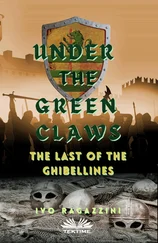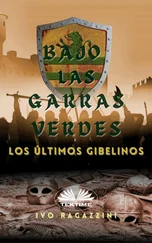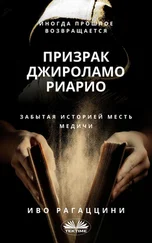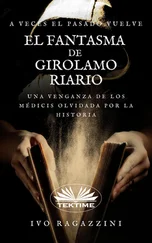"Did you know that Hortensius?" added Caesar.
"I've never been there but once a centurion told me something like that," replied Commander Hortensius in Latin mixed with Gallic.
"Did he at least tell you who built it and why it was called Puniceus Rubicon 2?" asked Caesar.
"No."
"Then that centurion didn't explain very much to you," smiled Caesar.
"Would you teach me, General Caesar?"
"Very well, Commander Hortensius."
"Many years ago, when there was no Romanavia 3, a tribune called Flaminius built a road that led from Rome to Rimini in this land that was named Flaminia in his honor."
"However, a few years later a Punic general named Hannibal crossed the Alps and surprised Rome from northern Italy."
"So the Tribune Flaminius was appointed Consul and the Senate quickly ordered him to defend the road to Rome, which he had just finished building, and to construct a defensive line to block access and prevent Hannibal descending towards Rome."
"And so, the consul Flaminius, built that series of lines of defenses on a few rivers and trenches between the current Caes Arena and Ariminium and called it Puniceus Rubico 4. These defenses were hurriedly constructed because he had to halt the Punic Hannibal's descent towards the Via Flaminia, the only road that led from the north directly to Rome," explained Caesar.
"Thank you Caesar. Why do they call it Rubico finis today?" asked Hortensius.
"Because it is a ruby-red line that is still impassable to enemies and protected by the Gods of Rome. These defenses were cordoned off by palisades made of maritime pines that were taken from the enormous pine forests you see around here. It was then painted rubico, 5the sacred color of Rome, and made inviolable by the Gods with a sacred ritual performed by a few Flaminian 6priests who placed the terrifying spirits of our Patres to guard the border and punish whoever dared to cross it armed."
"So, it was forbidden to cross the Rubicon armed for this reason?" asked Hortensius a little alarmed.
"Certainly, but I should add they also placed legionaries to guard it, because sometimes the gods alone are not enough. And seeing that now the Punic threat has disappeared, most people only call it the Rubicon and leave it standing to prevent any barbarians and enemies from the north descending towards Rome." Smiling Caesar added, "Including Roman and Gallic legionaries, of course."
"Therefore Rubicon means ruby-red, noble Caesar?"
"Of course, it is the sacred color of Rome, the ruby color that you still see on all our dispatches and red-bordered notes that we use and receive from Rome," 7replied Caesar.
"Thank you Caesar, I didn't know. Could you also explain why the Roman legionaries are afraid to cross it, while those of Gallic origin are not?"
"Because whoever is Roman and crosses it becomes a traitor and, it is said, the Gods of Rome will strike them down with a bolt of lightening, while whoever is not Roman will be defeated by the soldiers of Rome helped by the Gods. Or at least so some Flaminia priests say, who every now and then perform a ritual to curse anyone who tries to cross it bearing arms," Caesar answered with a smile.
"With all these curses surrounding it, wouldn't you be afraid to cross it also, noble Caesar?"
After thinking a while Caesar replied: "A little, yes, but not much."
"So it is only because of the Flaminian priests' sacred protection that our Gallic legionaries would be willing to attack it, while the Roman legionaries would not," asked Hortensius, thoughtfully.
"Of course, the problem is not only military, but religious also," replied Caesar smiling.
"Is the Rubicon still defended by that red palisade?" asked Hortensius.
"Yes. Those ruby-red painted poles are occasionally restored and rededicated by a Flamen Dialis 8and must eternally protect and ensure people know where the Rome border is located, beyond which it is forbidden to march armed. Once Hannibal was defeated, that border was simply called Rubicon and now it has remained the border for entering and leaving the Roman territory," explained Caesar.
"I read a report that says: two legions under Pompey have left the Rubicon and lined up almost below Cesena," said Hortensius, increasingly curious to learn new things.
"Yes, but they haven't really left the Rubicon; they have arranged themselves on the three defensive lines that have always been the Rubicon since the time of Flaminius, when he tried to stop Hannibal between Rimini and Cesena."
A little surprised Hortensius asked, "The Rubicon has three defensive lines between Rimini and Cesena?"
"Of course, Commander Hortensius. The Rubicon was built on three defensive lines, spaced far enough apart from each other so that it was possible to maneuver between them without difficulty and thwart enemy attacks, as our Roman strategy for war should have taught you long ago," Caesar smiled slightly, who saw Hortensius as his young student.
"And which of the three lines would the Rubicon be?"
"They are all three defensive lines of the Rubicon, but only the final red line, the one just before Ariminium, built on the Pluso 9river is the one that is protected by a fence and made impassable to anyone coming armed against Rome," explained Caesar.
Hortensius was thoughtful for a moment and then added:
"What if we crossed it armed?"
"We will immediately be declared traitors and enemies of Rome."
"I understand. Why is that area called Romandia?" asked Hortensius, as tirelessly curious as he was.
"It is called Romandia, because it means crossing and the Roman district, in peacetime it is used to disband the legions before entering Rome or to rearrange and reorganize them to go north."
"Moreover, if you have read the latest military report, they are afraid we'll cross that line and they've hurriedly sent two Pompeian legions to the front line near Cesena to reinforce that area to prevent us from crossing," explained Caesar.
"Yes, I've read that report as well. It says the Pompeian legions have left the Rubicon and lined up on some well-defended rivers and trenches and are quite close to Cesena," replied Hortensius.
"Exactly, but I want you to look at the situation better," said Caesar as he pulled out a map of the place drawn on parchment that he opened in front of Hortensius.
"Pompey's legionaries camped, more or less here, near Caes Arena, as did the Consul Flaminius against Hannibal. And their first line was located on this river, which can be flooded by diverting the waters thanks to the locks and channels located upstream a few miles towards the mountains above Caes Arena," said Caesar while showing him the place on the map.
"And where is the Rubicon's second line?" asked Hortensius.
"It's here! A few miles back on another stream, at a place called Ad Confluentes, which can always be flooded by diverting the waters upstream," Caesar showed Hortensius where it was on the map.
"And where is the final line?"
"It is this red line you see drawn here, a few miles further south near Ariminium, 10where it is defended by a red wooden fence that stands as much as four meters tall for the reasons I've just told you. And this is the impassable border that, with or without the favor of the Gods, I intend to cross," concluded Caesar threateningly.
What was the real Rubicon?
You should have understood this already from the conversation between Caesar and Hortensius, but let's try to summarize what has happened over time.
For centuries historians have debated and puzzled about what the real Rubicon was because of the fact that according to historical sources, legends and geological reconstructions, it now seems to have been a river that passed near Cesena, now other rivers between Savignano and Santarcangelo di Romagna, 11which was true in a way, but a few details were lacking that created a little confusion.
Читать дальше








